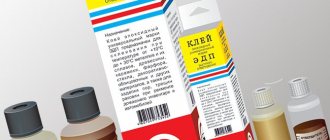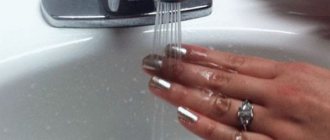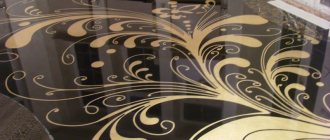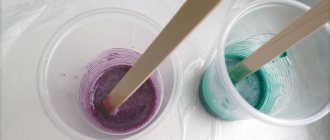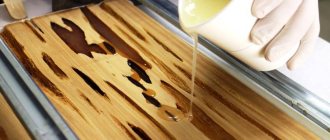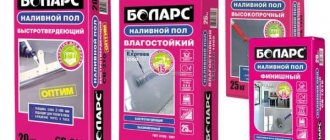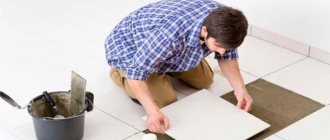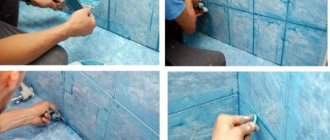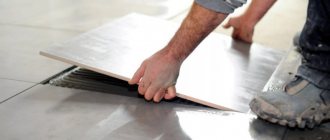Epoxy resin-based adhesive has long been recognized as a universal composition for household and industrial use. But when one of my friends decided to make jewelry based on epoxy, one of the first questions was, of course, how long it takes for epoxy glue to dry. Having enlightened her on this issue, at the same time I told her how to paint the resin in different colors, and also why sometimes it does not harden, and what can be done in this case.
Source fetasa.es
Epoxy doesn't dry - why?
If 12 and 24 hours have passed and the glue remains viscous, there are several reasons:
- the room was cold, the ambient temperature was lower than the temperature at which the glue hardens (indicated on the package);
- the proportions were chosen incorrectly - less hardener was added than needed; in this case, the glue may partially harden, but a sticky film (resin that has not entered into the reaction) will remain on it, which, however, may dry out after a couple of weeks;
- added dye (if you put something other than the two main components) interfered with the reaction;
- The epoxy does not harden even if the hardener is spoiled or expired.
So we figured out how to properly glue flowers to fittings and other items for the home and creativity with epoxy glue. And here is the finished rose brooch.
Inspiration and more flowers to everyone!
Is it harmful to health?
After hardening, epoxy resin under normal operating conditions is absolutely harmless to the human body. But its use is limited by the fact that when hardened under industrial production conditions, a small soluble residue (sol fraction) remains in the composition. It is this residue that can cause serious health damage if it is washed away with solvents and enters the human body. Epoxy resins are poisonous before they harden and can adversely affect health.
How to wash
If the glue gets on a surface that is not to be glued and has not yet had time to harden, it can be cleaned with a soap solution. Stubborn residues can be removed with acetone. The hardened mixture can be removed with liquid vegetable oils, under the influence of which it softens and peels off.
- Freezing. Epoxy can withstand low temperatures down to -20°C, so freezing it in a home freezer is ineffective. It must be removed with an aerosol refrigerant. If you spray it on the adhesive surface, it will become brittle. Afterwards, you need to remove the glue with a spatula or a blunt knife. Removal must be done carefully to avoid injury from glue fragments.
- Heat. The glue softens when heated with a household hair dryer or iron. Solid heat-resistant layers must be heated with a hairdryer with heated air flow at the maximum level for several minutes. The softened areas are scraped off with a spatula. Heat until all excess residue is removed. If epoxy drips onto the fabric, it needs to be heated with an iron, placing a cotton rag on the front side of the material.
- Scraping. Hard, scratch-resistant surfaces can be cleaned of the adhesive mixture mechanically. Any metal tool can be used for this.
- Exposure to chemical solvents. This method cleans wear-resistant materials that are not exposed to aggressive environments. Acetone, alcohol, butyl acetate, aniline, and toluene can be used as a diluent. You need to moisten the contaminated area with any of these products, wait until the glue softens and remove its remains mechanically. You can remove glue from mirror surfaces with acetic acid.
Useful tips for storage and use
Work with epoxy resin should be carried out after reading the instructions on the packaging. If glue gets on your skin, wash the area thoroughly with soap and water. It is prohibited to use the composition for gluing cracks in containers used for storing and consuming food products.
If the glue is difficult to remove from the packaging, it should be heated in a convenient way (put it on a heating device or lower the tube into a basin of warm water). You can extend the shelf life of the epoxy composition in this way: create a vacuum in the container and put the box in a cold place.
How long does it last after it hardens?
Structures, materials and products created using epoxy resin are initially oriented to temperature standards established in accordance with accepted operating standards:
- Temperature from –40°С to +120°С is considered constant;
- the maximum temperature is +150°C.
But such requirements do not apply to all brands of resins. For specific categories of epoxy substances, there are extreme standards:
- casting epoxy compound PEO-28M – +130°C;
- high-temperature adhesive PEO-490K – +350°C;
- epoxy-based optical adhesive PEO-13K – +196°C.
Such compositions, due to the content of additional components, such as silicon and other organic elements, acquire improved characteristics. Additives were not introduced into their composition by chance - they increase the resistance of the resins to thermal effects, of course, after the resin hardens. But not only that - these can be useful dielectric properties or good ductility.
Epoxy substances of the ED-6 and ED-15 brands have increased resistance to high temperatures - they can withstand up to +250°C. But the most heat-resistant are resinous substances obtained using melamine and dicyandiamide - hardeners that can cause polymerization already at +100°C. Products in the creation of which these resins are used are distinguished by increased performance qualities - they have found application in the military and space industries. It’s hard to imagine, but the maximum temperature that cannot destroy them exceeds +550°C.
Review of popular primer manufacturers
The market for paint and varnish products offers a wide selection of primers in aerosol form for treating various surfaces, produced by Russian companies and leading companies in foreign countries.
Krasko LLC is a well-known company that produces anti-corrosion paint and varnish coatings to protect metal structures. The Finnish company Turu valo produces environmentally friendly paints and varnishes, among them there are products that combine the functions of three components: a rust converter, an anti-corrosion primer and decorative enamel. The Kudo automobile series also includes products in aerosol form, which are known to many Russian car enthusiasts and are in demand.
The BOSNY company from Greece is familiar in many countries around the world. Produces aerosols and sprays for various surfaces.
SOLID - the company supplies high-quality products for all types of professional repairs. With SOLID acrylic primer you can level the surface of your car. The Tikkurila brand catalog contains paint and varnish products that are impossible to do without when repairing metal surfaces.
The world-famous HB-BODY corporation produces many of the main types of automotive anti-corrosion chemicals: anti-corrosion agents, automotive paints, which are necessary for processing various car parts.
HB-BODY brand products occupy a leading position in the production of auto chemicals. Aerosols from this company are highly reliable, easy to use and have excellent performance characteristics.
Before purchasing primers, you must carefully study the technical characteristics of the material and its application features. There is no point in saving on the primer mixture; you should choose products from a manufacturer that has proven itself and is in high demand among consumers.
REOFLEX epoxy primer contains resins and additives that prevent the formation of rust, ensures good adhesion of paints and varnishes to exposed metal and its protection from moisture. REOFLEX epoxy primer is intended for the repair of both cars and trucks and trailers. Also, an epoxy primer is necessary when restoring the paintwork of watercraft and metal products exposed to direct contact with the aquatic environment. REOFLEX epoxy primer has good adhesion to various surfaces (metals, wood, plastic, glass, concrete, etc.) and also has excellent insulating properties. Epoxy primer can also act as an insulating layer for incompatible paints and varnishes, preventing the dissolution of some materials by others. REOFLEX epoxy primer is combined in a 4:1 ratio with the hardener. Solvent P650 can be added to the resulting mixture up to 25%. Different documents indicate different lifetimes of the primer after combining with the hardener. We recommend using the mixture immediately after preparing it. Fill the spray gun with soil only through a filter funnel. We recommend a simple, inexpensive and reliable spray gun for applying primary primers. Application of epoxy primer is simple. Degrease the surface with a silicone cleaner, remove the gloss from the surface with red Scotchbrite manually or with P240 wheels using a sander. The surface after treatment must be clean from oils, dirt, flaking old paintwork, and corrosion. Degrease again. Apply epoxy primer with a spray gun in 2 medium-thick layers. Interlayer exposure 10 - 15 minutes at a temperature of 20 degrees Celsius. Drying time for epoxy primer is 12 hours at 20 degrees Celsius, and 45 minutes at 60 degrees Celsius. We recommend using REOFLEX primer at an air temperature of at least 10 degrees Celsius. Putties and paints and varnishes can be applied to the epoxy primer only after it has completely dried. Before applying paints and putties, it is necessary to remove the gloss from the dried epoxy primer: with gray Scotchbrite or Superfine manually on a dry surface, or with a P400 wheel using a sander. You can also remove the gloss with wet P800 sandpaper. We recommend REOFLEX epoxy primer for professional use.
Methodology for working with material
The main specific feature of epoxy is the hardening of this material not by evaporation of components, such as varnishes, but through reactions occurring in the hardener and the resin itself. This reaction leads to polymerization of the epoxy, which hardens irreversibly. Since evaporation of components is eliminated, shrinkage of the epoxy resin is eliminated. Whatever volume you pour onto the workpiece, you will receive exactly the same amount upon completion of hardening. The varnish shrinks - when you pour a puddle with a convex surface, after drying it turns into a film, losing part of its volume.
In addition to the epoxy resin itself, you need:
- hardener specifically for it;
- two syringes without catheters;
- glass for disposable use;
- a stick used to mix the resin.
One syringe is used to determine the dose of resin and pour this substance into the glass. A similar action is performed with the hardener. It is necessary to pour a hardener into the resin, but the opposite is unacceptable. The hardener, as a rule, has a rather liquid consistency; it can splash out when sharp pressure is applied to the syringe. The ratio of hardener to resin for the mixture may vary from one manufacturer to another, for this reason you should carefully study the instructions, measuring exactly the amount recommended by the manufacturer, since incorrect proportions lead to unsatisfactory hardening of the epoxy resin.
The two liquids are thoroughly mixed until the mixture becomes homogeneous. This is done without haste, otherwise bubbles may form. When the epoxy resin and hardener have a liquid consistency, the bubbles that appear go to the surface, bursting, however, if the density of the components is sufficiently high, the bubbles remain where they were (the density of the components is determined by the manufacturer). If the epoxy resin is not mixed thoroughly enough, it does not harden well.
We wait for the contents in the glass to reach the consistency required for use (polymerization is slow, the thickness of the epoxy resin increases over time). Without this, the epoxy resin will not stick to the desired surfaces.
Possible causes of long drying times and ways to solve the problem
When epoxy resin interacts with different types of hardener, a variety of substances can be obtained. They vary in the degree of strength and elasticity, softness and elasticity. By combining the base substance and hardener in different ways and varying their concentrations, a polymer with different characteristics is obtained.
However, with any combination of constituent components, the resin must be completely dry before applying subsequent layers to the epoxy resin. The composition does not harden for several probable reasons. You should understand them in detail to prevent difficulties when using the material.
Error in the proportion of components
Due to insufficient or excessive amounts of hardener, the final result is often compromised. A sticky and not completely hardened layer that does not set for more than a day will have to be removed. Subsequent layers are not applied to epoxy resin that has not dried.
To obtain an ideal coating, it is necessary to strictly observe the proportions, and an increase or deficiency of any of the components negatively affects the final result.
When reapplying the compound, check the ratio of hardener to epoxy resin. It is better not to add extra hardener, but to prepare the composition according to the proportions specified in the instructions.
Incorrectly selected temperature mode
The mixture hardens at room temperature. However, the resulting coating will dry faster if the ambient temperature is increased. The effectiveness of setting the applied layer of epoxy resin largely depends on this factor.
In cool weather, the polymerization reaction time increases. Which entails an increase in the drying time of the composition. When the ambient temperature decreases by 10°C, the polymerization and hardening time increases by 10-15 hours.
What can be done? The following tips will help maintain optimal curing rates for your epoxy resin:
- curing will proceed faster if the required air temperature is maintained, if necessary - from an external source;
- If it is not possible to maintain the temperature at the proper level, or it is difficult, you can initially use a hardener designed to work at low temperatures to prepare the mixture.
According to the opinion of those who use epoxy resin, the best domestic brands of hardeners operating at low temperatures should be considered AF-2, and the best slow hardener is the DTB-2 brand.
Not mixing thoroughly
The most common mistake made, which entails a decrease in the rate of hardening of the composition, is insufficient mixing of the components. The reason for the lack of sufficient hardening of epoxy resin when mixing is not too long and thorough is the incomplete polymerization reaction, as a result of which the form of the liquid substance changes: the resin gives a durable and beautiful solid layer and ceases to be sticky.
To make a uniform composition, it is necessary to mix the epoxy resin and the selected type of hardener in the correct quantities. Carry out thorough mixing until the composition is completely homogeneous. There should be no places left in the resulting solution where there is a clear predominance of one of the components.
If it is planned to introduce additives or fillers into the composition, for example, silicone filler, which improves the final result, they should be used only after thoroughly mixing the mixture.
The situation can be corrected only by deleting the unsuccessful layer. A new mixture is prepared, the components of which are thoroughly mixed and applied to the prepared surface.
Incorrect selection of components
It is better to use a different hardener for each type of epoxy resin. This will eliminate the risk of prolonged hardening of the composition and improves the properties of the resulting coating. The same applies to the polyester resin catalyst; it must be selected in accordance with the type of epoxy.
When taking into account the listed possible errors when preparing a mixture based on epoxy resin, a high-quality and durable coating is obtained. Under favorable conditions, it dries in no more than one day.
The curing time at a certain temperature is given in the manufacturer's description. Each resin has its own area of application. Touch-to-touch curing time can range from 3 to 36 hours.
based on materials from Epoxy Problem Solving/ WEST SYSTEM how to use guides
and MAS Epoxies/Tech Support FAQ
translation by Sergei Barkalov
Fast curing EDP adhesive
This product is produced in packages of 45/250 g and is two-component. The first bottle contains epoxy and a number of modifiers, the second bottle contains a hardener. Purpose of fast-curing adhesive:
- connection of composite and metal products, objects made of alloys, ceramics, glass, and other materials;
- repair and sealing of devices;
- sealing chips, defects, cracks.
Typically this type of EAF adhesive is used when fast curing is required. The product replaces cold welding.
Advantages of glue
The adhesive composition has the following advantages:
- ensuring the required level of strength after 6 hours from the moment of application;
- work at a temperature of 10-30 degrees;
- low labor intensity of the process, the ability to process the adhesive seam even before the end of complete polymerization.
Application of fast-curing EAF
Before use, surfaces should be carefully prepared - cleaned, degreased, and dried. To improve adhesion, sandpaper is used. The bottle with resin is placed in water at a temperature of 60 degrees for 8 minutes. 1.5 parts of epoxy are mixed with 1 part of hardener, the resin lifetime is 30 minutes. You can use any fillers - cement, chalk, alabaster, fibers, graphite in a volume of up to 20%. The composition is applied in a thin layer to both surfaces, connected and pressed. Leave the product in the fixed position for 6 hours. Afterwards it is completely ready for use.
Gluing instructions
So, we looked at the question of how to prepare and how this glue works. Now let's look at the features of its use, and, in particular, how to properly and better glue a particular surface. The entire surface gluing procedure comes down to several sequential steps:
- Preparation and cleaning of the bonded surface.
- Preparation of the adhesive mass.
- Gluing.
The quality of gluing of two surfaces directly depends on the quality of preparation. If the glue is already ready, then there will be no time to prepare the part, because it dries quickly. This way, any contamination is completely removed from the surface. Emery can be used for this purpose. Everything is thoroughly degreased and dried.
At the next stage, the adhesive mass is prepared. Epoxy resin is placed in prepared clean containers. A few grams of hardener are added to it. According to the standard, the ratio of these components is about 1 to 10. These ingredients are thoroughly mixed together with your own hands.
Now don't hesitate! Your part is completely ready for gluing. Carefully and evenly apply glue to the surface and press them tightly together. The glue can be applied to two surfaces at once or only to one; there is no strict rule here.
The blanks are securely pressed against each other for ten minutes. After a few hours, complete hardening will occur.
Advice! this mixture can also be used for tiles. The main condition is to carefully prepare the surface to be glued. Although it is not a replacement for tile adhesive, epoxy can bond tiles securely for a long time.
Preparing the surface for applying epoxy resin
Regardless of what material the surfaces are made of, it is important to follow all rules and recommendations, since this may affect the quality and service life of the glued structure. First you need to degrease the surface
The presence of fatty deposits will negatively affect the hardening of the adhesive. The surface also needs to be sanded. To sand a small area, you can use sandpaper; large surfaces are better treated with sanding machines.
First you need to degrease the surface. The presence of fatty deposits will negatively affect the hardening of the adhesive. The surface also needs to be sanded. To sand a small area, you can use sandpaper; large surfaces are better treated with sanding machines.
The manufacture of laminated glass involves applying each layer to a sticky surface.
A properly prepared surface will affect how long it takes for the epoxy resin with hardener and fiberglass to dry.
Solidification stages
The mixture of epoxy and hardener does not stand up all at once; the formation of continuous and ultra-long (on a molecular scale) polymer chains does not occur in the entire mass of the epoxy composition. Polymerization occurs in separate fragments, which only then, over time, merge into a single polymer mass.
Useful to know > What fillers are used for epoxy resin and why they are needed
The process of hardening, thickening and drying a product made of epoxy resin mixed with a hardener goes through several stages:
- Liquid fluid consistency, which allows, due to this fluidity, to fill the slightest irregularities in the cavity of the material being poured.
- Thicken the mixture to the state of cold buckwheat honey. In this form, the mixture is no longer able to completely fill surfaces with complex and pronounced relief.
- The density is already such that it slides out of an overturned vessel at a speed of no more than a centimeter per second. Suitable only for gluing large parts.
- It is so thick that when you try to separate at least part of the total mass, a long trail of resin stretches behind this part, freezing before your eyes.
- “Rubber stage”, it no longer sticks to your hands, you can bend, stretch, twist the casting from the composition.
- To the touch the product is made of plexiglass or plastic. Solid, durable, little susceptible to external influences.
Epoxy glue proportions
The instructions say that for 100 parts of resin you need to take 10 - 13 parts of hardener. Or for 10 parts of resin (viscous slurry in a larger bottle), you need to take 1 - 1.3 parts of liquid hardener from a smaller bottle.
You need to measure the components very accurately, and it is better to use syringes for this.
It is more convenient to measure the resin by pouring it into the syringe from above (remove the piston first and plug the nozzle of the syringe). Drawing resin through a piston or needle is unrealistic.
You can measure the hardener with a syringe through the piston, because... the viscosity of the substance is low.
Looking at the divisions of the syringe, it is easy to measure out a tenth.
We measure the proportions of epoxy: on the left - resin; on the right - hardener
For each epoxy adhesive, the proportions are “individual” - they are indicated on the packaging. The main requirement is to follow them.
How to make your own resin hardener
Hardener is usually sold with the resin, but it may not be enough. This happens if the exact dosage is not observed; as a result, more hardener is consumed than resin. Many may ask: can we make a hardener ourselves?
To create a hardener at home, you cannot replace any component. It will be necessary to buy chemicals specifically approved for this case - such as Telalit 410, Etal-45M, CHS-Hardener P-11.
The necessary components can be found in markets, specialized stores and points of sale, and online stores.
To create a hardener with your own hands, you can add dry alcohol to the resin. To do this, you need to crush the alcohol tablets, add resin in a ratio of 1:10, and leave the composition for up to 12 hours. Once the composition has acquired viscosity, it can be used. However, such independently completed material will be questionable in terms of effectiveness.
Common brands
There are many epoxy adhesives from imported and domestic manufacturers on the Russian market:
- “Moment” (Henkel) is a heat-resistant adhesive composition of a high strength class, developed on the basis of epoxy resin and packaged in small tubes (50 g) or in bulk packaging intended for reusable use. Representatives: “Super Epoxy”, “Epoxylin”.
- TechnoNIKOL is a high-temperature polyurethane adhesive composition, presented in the form of a paste-like mass. Before use, it is recommended to read the instructions for use and mix, combining the components. Used for laying parquet, natural stone and ceramic tiles, it has high mechanical strength and is shock-resistant and does not conduct current.
- “EDP” (NPP Rogneda) is a two-component product used both in production and in everyday life. It has high adhesive properties and high bonding strength.
- Flex is a multi-component product used in industry and production for interior and exterior work. Designed for bonding lines up to 5 mm per cut.
- Sikadur 31cf normal - instantly glues metal products. The level of fixation can be compared to heat treatment in terms of strength. Used both in production and at home.
- "ED-20" is an epoxy resin, which is an oligomer. Polyamide is used for hardening. Used as an adhesive, sealant, protective coating or reinforced plastic. In order to make the mixture, you need to dilute the components, stirring until smooth.
- Done Deal is a high-strength, quick-drying, conductive adhesive that reliably and quickly glues any combination. The packaging is presented in the form of a syringe, the mixture is black.
- "Poxipol" - cold welding or fiberglass. Available in two tubes in the form of epoxy resin and hardener. Poxipol glue dries in 5-6 minutes. After this time, it hardens completely.
- Eporip Mapei is a two-component, heavy-duty product designed for adhesion to fresh concrete mix and old concrete. Epo is widely used to correct cracks in screeds. Does not contain solvents.
The best brands are Titan, Abro, Endfest 300, Uhu, Mapei, Ultima (Ultima), Secunda, Eporip (Krasnodar). They are used for granite, concrete and polyurethane, as well as for plumbing. They can be used for car plastic and for gluing crafts with your own hands.
Preferred epoxy compositions
Experts believe that when carrying out repair work in domestic conditions, it is preferable to choose epoxies that contain:
- Polymer and oligomer plasticizers;
- Oligosulfides;
- Oligoamides.
Due to the presence of the listed compounds, the adhesive properties are noticeably improved and, accordingly, the efficiency of the resulting gluing increases.
Choosing insulation
Despite the fact that the insulation layer is located in the thickness of the walls or roofing pie, its properties also greatly influence the effectiveness of the fire protection of the house. A layer of high-quality non-flammable insulation eliminates the risk of internal fire under the roof or siding of the cottage, and also prevents the flame from spreading inside the house. Let's consider the advantages and disadvantages of the three most popular materials for thermal insulation of country houses on the modern market.
- Expanded polystyrene - produced from polystyrene by heating and introducing foaming agents. All types of expanded polystyrene belong to the group of highly flammable synthetic materials. Expanded polystyrene quickly flares up and becomes the initiator of further spread of the flame, and also emits caustic smoke and toxins such as hydrogen bromide, hydrogen cyanide and phosgene when burning. To reduce the flammability of expanded polystyrene, various additives are introduced into the material during manufacturing to reduce smoke formation and increase the ignition temperature;
- Extruded polystyrene foam (EPS) is foamed polystyrene - a lightweight porous material consisting of 98% air. EPS belongs to the category of medium-flammable materials; it does not spread flame over its surface, but emits smoke that is hazardous to health when burned. Despite its shortcomings, expanded polystyrene is in demand on the market and is widely used to create warm floors, insulate walls and ceilings;
- Stone wool is one of the new generation of environmentally friendly insulation materials and consists of solid mats and blocks of fibers obtained from gabbro-basalt rocks. Stone wool belongs to the class of non-combustible materials and does not melt at temperatures up to 1000 C°. In addition to fire resistance, this insulation has a number of other advantages (strength, vapor permeability, minimal thermal conductivity and ease of processing), making it an ideal choice both for insulating the roof and walls of a house, and for creating a heat-insulating layer in the floors between floors. Thanks to its excellent thermal insulation properties, stone wool is officially recommended for insulating buildings with high fire safety requirements.
To summarize, we note that despite the large selection of building materials, only some of them fully comply with fire requirements and are able to effectively protect a residential building from the spread of fire. The most durable, economical and easy-to-install products for creating fire-resistant roofing and facade cladding are steel products - metal tiles and steel siding, which meet the most stringent fire safety standards. To create the most fire-resistant construction of a cottage, the steel roof and cladding can be supplemented with a heat-insulating layer of stone wool - it is from this combination of materials that multi-layer fire walls are created that can hold a fire for several hours.
Curing speed
In conclusion, it is worth paying attention to the question of how quickly the epoxy adhesive hardens. Some, in order to speed up this process, think that more hardener can be added
Thanks to this, the composition will quickly harden. However, this is a misconception. If you want to achieve rapid hardening of two surfaces, then you need to artificially increase the temperature.
Conclusion So, now we have looked at all the features of epoxy glue. Decide for yourself which one is better to choose. You can purchase a proven domestic manufacturer
When choosing, be sure to pay attention to the expiration date of the composition on the packaging.
Choose the glue that will fulfill its main purpose. We hope this material was useful to you. You have learned about the main properties of epoxy glue. Additionally, we suggest watching the video: How to properly mix epoxy resin.
Factors affecting the rate of hardening
To find out exactly how long it takes for epoxy to dry, you should take into account a wide range of associated conditions.
The most influential factors in the curing of a given adhesive include the following criteria:
- Time elapsed since the release of the glue - the less time has passed since the release of the resinous composition, the faster it will dry;
- Chemical formula and type of hardener used in a particular case;
- The proportions in which the hardener and viscous resin were mixed;
- The area or volume of the product element to be sealed;
- Height of the poured resin layer;
- The temperature required for rapid polymerization of the composition.
Standard and atypical polymerization times
It almost always takes from one to one and a half days for epoxy glue to harden.
If much more than 2-3 drops of resin were used to fix broken parts, then polymerization until complete hardening can take a whole week, provided that the elements to be glued are in a normally heated room.
It is important to take into account that the hardening time can increase sharply if, when mixing the components, there is a significant deviation from the dosage norm of the hardening reagent.
If there is a lack of a curing component, the epoxy resin will not turn into a hard state. If there is an excess of catalyst, polymerization will occur at an accelerated pace, however, after drying, the adhesive composition will not hold parts of the products together as effectively as after curing in normal conditions.
How long does it take for resin to harden?
Although we explained above why exact calculations are impossible, to work adequately with epoxy resin you need to have at least a rough idea of how much time will be spent on polymerization. Since a lot depends both on the proportions of hardeners and plasticizers in the mass, and on the shape of the future product, experts advise making several experimental “formulations” with different proportions in order to clearly understand what relationship of the various components will give the required result. Make test samples of the mass small - polymerization does not “reverse”, and it will not be possible to obtain the original components from a frozen figure, so all damaged workpieces will be completely damaged.
Understanding how quickly epoxy hardens is necessary, at least for a clear planning of your own actions, so that the material does not have time to harden before the master gives it the desired shape. On average, 100 grams of epoxy resin with the addition of PEPA hardens in shape for at least half an hour and an hour at most at room temperature of 20-25 degrees.
Reduce this temperature to +15 - and the minimum setting time will sharply increase to 80 minutes. But this is all in compact silicone forms, but if you spread the same 100 grams of mass at the room temperature mentioned above over a surface area of a square meter, then be prepared that the expected result will appear only tomorrow.
An interesting life hack follows from the pattern described above, which helps preserve the fluid state of the working mass longer. If the work requires a lot of material, with strictly identical properties, and you simply do not have time to process it all, then divide the prepared mass into several small portions.
When working with the material, pay attention to how it hardens. Whatever the starting temperature, whatever type of hardener, the stages of hardening are always the same, their sequence is stable, the proportions of the speed of passing the stages are also maintained
Actually, the fastest way is for the resin to transform from a full-fledged fluid liquid into a viscous gel - in its new state it can still fill molds, but its consistency already resembles thick May honey and will not convey the thin topography of the container for pouring. Therefore, when working on crafts with the smallest relief patterns, do not chase the speed of hardening - it is better to have a one hundred percent guarantee that the mass will completely repeat all the features of the silicone mold.
If this is not so important, remember that later the resin from a viscous gel will turn into a dough-like mass that strongly sticks to your hands - it can still be molded somehow, but it is more likely to be glue than a material for full-fledged modeling. If the mass gradually begins to lose even its stickiness, it means that it is close to hardening - but only in terms of stages, and not in time, because each subsequent stage takes much more hours than the previous one
If you are making a full-fledged large-sized craft with fiberglass filler, it is better not to expect results faster than in a day - at least at room temperature. Even when frozen, such a craft will in many cases be relatively fragile. To make the material stronger and harder, you can even use “cold” PEPA, but heat it to 60 or even 100 degrees. Not having a high tendency to self-heating, this hardener will not boil, but it will harden faster and more reliably - within 1-12 hours, depending on the size of the craft.
Types and characteristics of glue
Depending on the number of bottles included in the package, the following types should be distinguished:
- One-component - is a ready-to-use mixture that does not need to be diluted, but simply stirred. The adhesive mass begins to harden immediately after opening the package. A one-component material is designed to perform a small amount of work, for example, for gluing small defects, sealing seams, etc.
- Two-component - the package includes 2 containers, one of which is filled with epoxy, and the other with hardeners. Preparation is carried out in accordance with the recommendations specified in the instructions - they should be mixed in the specified proportions and used for their intended purpose.
The consistency can be liquid or in the form of a thick mass, reminiscent of plasticine in structure. Liquids are ready to use and do not require dilution. Thick epoxy glue requires preparation - kneading with wet hands and mixing.
Composition and properties
Epoxy adhesives from different manufacturers may contain different components, but the basic composition is always the same, it complies with GOST and the attached certificates. Two main substances in the composition are strictly required:
- epoxy resin itself;
- liquid or paste hardener.
Polyamines, carboxylic acids, and aminoamides are used as a curing composition. One-component adhesives always contain solvents (acetone, xylene, alcohols), which prevent the mass from hardening before contact with air and evaporation. The following can act as modifying additives and fillers for glue:
- synthetic rubber;
- formaldehyde resin;
- fiberglass;
- clay, chalk;
- aluminium oxide;
- vanadium, nickel, zinc powders;
- organosilicon resins.
All of the above binding components provide the epoxy adhesive with the desired properties:
- optimal density;
- seam strength;
- high curing speed;
- resistance to oils, gasoline, water, atmospheric factors;
- resistance to cracks and shrinkage.
It is also worth noting that glue does not conduct current - it is a dielectric, so it is often used to insulate electricity.
Epoxy: creativity and tinting
Epoxy resin has found widespread use in design. It is used to make three-dimensional paintings, jewelry, and interior decor. The transparent and multi-colored polymer has become a favorite potting compound for countertops.
Source design-homes.ru
They have long and successfully learned to paint the composition in different colors, create gradient transitions, as well as various effects (for example, radiance or iridescence). Ready-made dyes (usually acrylic) for epoxy can be found in craft stores. It’s easy to choose any option: transparent colored, matte, pearlescent paint, with glitter or metallic effect.
If you don’t have the right store nearby, the problem of how to paint epoxy can be quickly solved using improvised means. The main principle of selection is that the dye must not be water-based, and it is first mixed with the resin, and only then the hardener is added. You can experiment with the following materials:
- Ballpoint ink is better than gel, it is brighter and retains color better.
- Paints from an art store: oil, stained glass; ink for polymer clay. Nitro paints for cars. Alkyd dyes.
- Dry pigments from a hardware store.
- Alcohol solutions: pharmaceutical green, stain, printer toner.
Source ethnoboho.ru
What to do if the resin does not harden in the following video:
